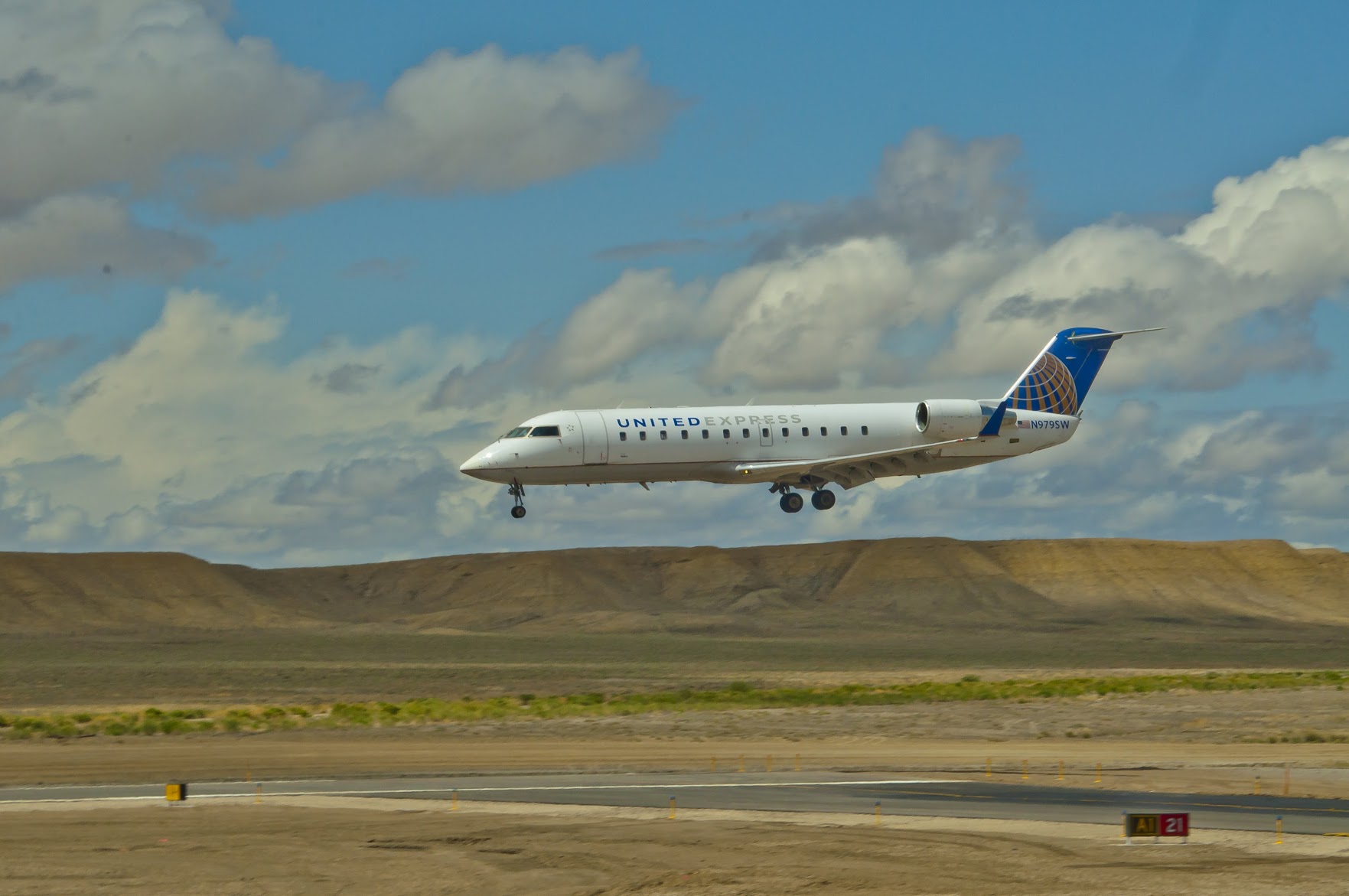Some information may be outdated.
Canyonlands Field Airport isn’t flying passengers to Salt Lake City anytime soon, but is supportive of a new seasonal flight schedule that could pave the way for more destinations.
The Grand County Airport Board met on April 15 and discussed its air service and flight schedules.
Judd Hill, the airport’s director, spoke about what the board and county need to be working toward if they want to have “beyond Essential Air Service” — additional flights to other cities and locations.
Essential Air Service (EAS) is a program that guarantees scheduled passenger commercial airline service to small communities, with subsidies if necessary, according to the Congressional Research Service’s 2018 report on Essential Air Service. The report says 174 communities in the U.S. receive subsidized service (usually with a $200 per passenger subsidy cap) under EAS.
The board discussed a letter of recommendation from SkyWest Airlines addressed to Scott Faulk at the U.S. DOT Office of Aviation Analysis in Washington, D.C., on seasonal schedule adjustments for flights at the Canyonlands Field Airport to “align with capacity and demand.”
The Office of the Secretary of the U.S. Department of Transportation (DOT) administers the EAS program. It enforces the eligibility requirements and determines the level of service required at eligible communities, the Congressional Research Service report says.
The letter proposes that SkyWest, the commercial airline service contracted at the airport, would increase its number of weekly flights during the busiest times of the year and decrease services starting on Oct. 28 to just seven weekly flights. The schedule of seven flights would continue under SkyWest until Feb. 29, 2019, when the airline’s contract ends.
“We met with SkyWest at UAOA (Utah Airport Operators Association),” said Grand County Airport Board chair Bill Groff.
Hill told the board that to expand flight service to other locations, “it’s all about the load factor” for “what seats are being sold coming and going to a destination.”
The optimal load factor is a 90% enplanement, Hill said. He said SkyWest wants an 80-90% load factor “before they will start thinking about expansion.”
Hill said that there is about a 25% load factor for three months out of the year in the wintertime when people are not flying as much.
The variation in the flight schedule for the winter will decrease the number of weekly flights, but could increase the number of enplanements on the flights that are available.
“It might inconvenience some people … it all depends on where people are going and how their schedules (are aligned),” Hill said.
“I’m sympathetic to this issue of load factor, but cutting back to one flight a day will make it impossible for people who are going to Denver to connect or coming back through Denver to connect,” board member Bob Greenberg said. “It can’t work both ways.”
For example, If a person flew into Denver in the morning to connect to a flight to Moab, and if there was only one flight offered in the morning, that person would have to stay the night in Denver to connect the following morning.
“… there’s a bitter pill to swallow,” Greenberg said. “… this would be a major impediment for Grand County residents who depend on EAS to connect to national airports … this would be an extremely unfortunate change.”
Speaking personally, Greenberg said it would make some of his own travel “impossible.” He said that if locals couldn’t connect, and had to stay overnight in Denver, it “suddenly becomes more convenient” for locals to instead fly in and out of the airports in Salt Lake City or Grand Junction, Colorado.
Greenberg said it’s “speculation” that reducing flights in the winter would increase enplanement, but said “it’s not speculation” that it would be less inconvenient for locals on days when there would just be one flight.
“During the times that most people are flying, there would be two to three flights every day of the week,” Hill said.
“So this is an attempt for us to try to get other locations …” said board member Karen Guzman-Newton.
“Well, it would be step one in getting in that direction,” Hill said. “It’s not a guarantee. … Right now, even though our numbers are through the roof, this is historical for Moab, they’re not good enough to look at for even considering expanding additional Denver routes, much less destinations (other than Denver).”
The U.S. DOT is giving SkyWest $2.9 million per year as a subsidy to fly into Moab “because otherwise it’s not financially worth it for them,” Hill said. The subsidy puts ticket prices in the range of about $80 per one-way flight.
The Grand County Airport Board voted to support SkyWest’s letter of recommendation to the U.S. DOT, with all in favor except for Greenberg, who remained opposed.
On April 16, Hill presented a letter of support for the seasonal flight changes to the Grand County Council. The Grand County Council voted on a motion to approve the support, but it failed with a vote of 2-2-2.
Reduction in winter flights could lead to more enplanements
“I’m sympathetic to this issue of load factor, but cutting back to one flight a day will make it impossible for people who are going to Denver to connect or coming back through Denver to connect.”
Appreciate the coverage? Help keep local news alive.
Chip in to support the Moab Sun News.





